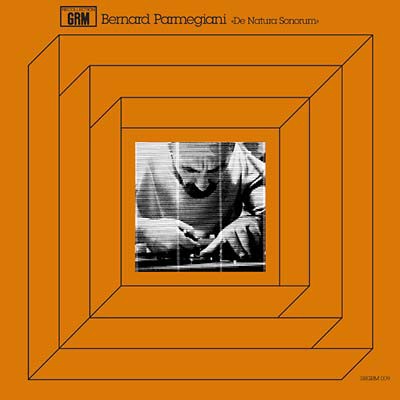PARMEGIANI, BERNARD - De Natura Sonorum
Couldn't load pickup availability
"De Natura Sonorum (1975): Premiered at the Salle Wagram in Paris on June 3rd 1975. A suite of 12 movements, divided into two series of six. The first series comprises six related movements, usually organized in pairs, electronic sounds with instrumental and more rarely, concrete sounds: Incidences/resonances bring into play controlled resonances akin to sounds of concrete origin in a process that helps to expand the variable electronic sound sources. Here, incidents are opposed to one-off accidents in the second movement: Accidents/Harmoniques (Accidents/Harmonics). In the second movement, very short events of instrumental origin change the harmonic tone of the continuum they interrupt or overlap. Moreover, the high notes are underplayed, which stimulates the attention given to other phenomena generally hidden by the melodic form applied to the instrumental play. G_ɬ©ologie sonore (Sound Geology) is similar to a flight over an area where different sound layers come to the surface one after the other. When seen from high above, instrumental and electronic sounds seem to fuse. Dynamique de la resonance (Dynamics of Resonance) is a microphonic exploration of a single sound resonating through different forms of percussion. LEtude _ɬ©lastique (Elastic Study) places together various sounds produced by touching elastic or instrumental skins (balloons, doumbeks) or vibrating strings and a number of instrumental gestures close to this touch, using electronic processes to generate white noise. Conjugaison du timbre (Conjugated Tone), the last movement in the series, uses the same substance to apply rhythmic forms onto a perpetually varying tone continuum. The second series of movements draws its inspiration from concrete and electronic sources rather than instrumental ones. Incidences/battements (Incidences/ Beatings) is a reminder of the first movement in the first series, which then quickly moves into Natures _ɬ©ph_ɬ©m_ɬ®res (Ephemeral Natures): an ephemeral play on instrumental and electronic sounds, singled out by their internal trajectory rather than by the material itself. Mati_ɬ®res induites (Induced Matters): just as molecular effervescence triggers changes of state, it seems that the different states of these sound materials can be generated by each other or through induction processes. In Ondes crois_ɬ©es (Crossed Waves), the pizz vibrations interfere with somehow visible water drops on the surface of a similar material. Pleins et d_ɬ©li_ɬ©s (Downstrokes and Upstrokes) can be listened to as the energies absorbed in the motion of bouncing bodies, while hollow bubbles and points bring together some peoples gravity and others downwards movements. The work finishes with Points contre champs (Reverse Angle Points). Here, the notion of perspective of the different sound threads weaving a kind of network, or field, traps the occasional iterative elements in the foreground and progressively absorbs them, giving more space for the angle -- and the chanted sound -- to grow. --Bernard Parmigiani; De Natura Sonorum whose title echoes Lucretius De rerum natura, similarly explores the multiplicity of sound possibilities. This profuse work, with countless discoveries and dazzling intuitions, has influenced several generations of composers and remains a truly seminal piece in the experimental music soundscape. De Natura Sonorum, one of Parmegianis masterpieces, has left an indelible mark on the classical period of electroacoustic music. At last, it is being reissued on vinyl and for the first time this includes the whole of its 12 movements." - Christian Zanzsi & Francois Bonnet. Housed in a gatefold sleeve.


